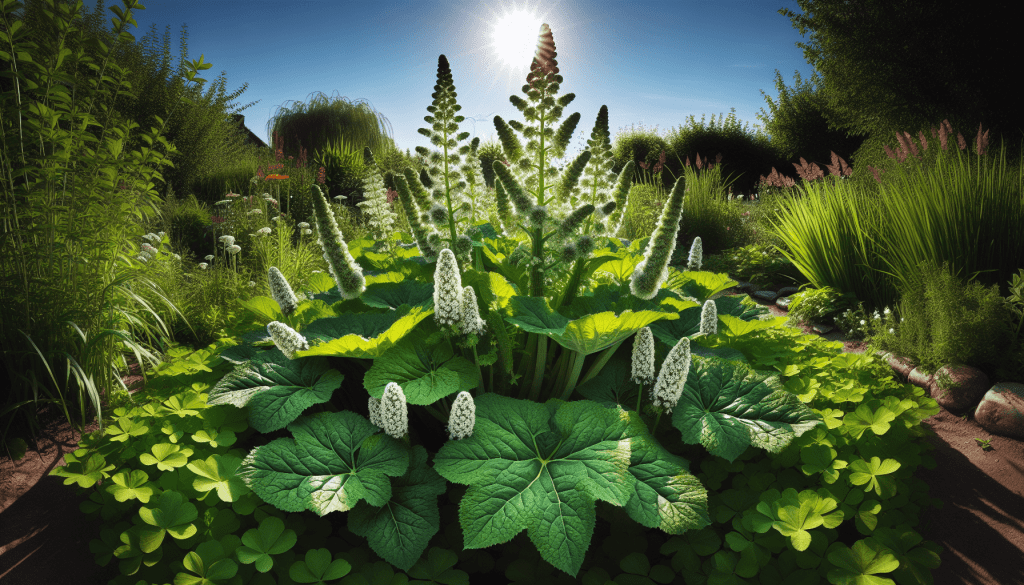Dealing with Alligator Weed in your garden requires patience and persistence, but with the right strategies, you can keep this invasive species at bay. In “How To Control Alligator Weed In Your Garden,” you’ll find practical tips and effective methods to manage this pesky plant. From identifying its characteristic features to implementing both mechanical and chemical control measures, this guide offers a comprehensive approach to help you restore and maintain the health of your garden. Dive in to discover how you can reclaim your green space from Alligator Weed and enjoy a thriving, weed-free garden. Have you ever wondered how you can keep your garden free of invasive species like alligator weed? This pesky intruder can quickly take over, crowding out your plants and creating a serious headache. But don’t worry; you’ve come to the right place! In this article, we’ll explore everything you need to know about how to control alligator weed in your garden. By the end, you’ll be equipped with practical tips and solutions to keep your garden thriving.

What is Alligator Weed?
Understanding Alligator Weed
Alligator weed (Alternanthera philoxeroides) is a sturdy, fast-growing perennial plant. Recognized by its glossy, elliptical leaves and small white flowers, it can thrive in various environments such as wetlands, gardens, and even water bodies.
Why is Alligator Weed a Problem?
This invasive species isn’t just a cosmetic concern; it can choke waterways, disrupt native ecosystems, and give your garden a run for its money. The extensive growth of alligator weed can overshadow other plants, steal nutrients, and generally cause havoc.
Identifying Alligator Weed in Your Garden
Physical Characteristics
To control alligator weed, you first need to know what you’re dealing with. Here’s a convenient table to help you identify its features:
| Characteristic | Description |
|---|---|
| Leaves | Elliptical, glossy, and opposite |
| Stems | Hollow and can float on water |
| Flowers | Small, white, and clustered |
| Root system | Extensive and can regrow from fragments |
Spot these signs early to take swift action. Remember, accurate identification is the first step toward effective management.
Methods to Control Alligator Weed
Biological Control
Using natural predators or biological agents can be a sustainable way to handle alligator weed. Grass carp, for instance, have shown some effectiveness in reducing its spread in aquatic environments. However, this method is more suitable for larger, water-bound infestations and may not be practical for your garden.
Chemical Control
Herbicides can be effective, but they come with their own sets of pros and cons. It’s crucial to select the right type of herbicide and apply it correctly for optimal results.
Common Herbicides for Alligator Weed Control
| Herbicide | Active Ingredient | Usage |
|---|---|---|
| Roundup | Glyphosate | General application, non-selective |
| Habitat | Imazapyr | Suitable for water and terrestrial use |
| Weedar 64 | 2,4-Dichlorophenoxyacetic acid | Selective for broadleaf weeds |
Always follow the instructions on the label carefully and consider the environmental impact of the herbicide you choose.
Manual Removal
Manually removing alligator weed can be labor-intensive but is often effective. Dig up the plants, ensuring you get as much of the root system as possible. Missed roots can lead to regrowth.
Tips for Manual Removal
- Timing: Remove alligator weed during its growing season when the soil is moist.
- Tools: Use garden forks or weed pullers for efficient removal.
- Disposal: Bag the weed fragments to prevent regrowth and dispose of them properly.
Preventive Measures
Prevention is always better than cure. Implementing measures to stop alligator weed from taking root in the first place can save you a lot of trouble.
Mulching
Mulching not only conserves soil moisture but can also inhibit the growth of alligator weed by blocking sunlight.
Regular Monitoring
Regularly inspect your garden for early signs of alligator weed. Quick intervention can prevent a minor issue from becoming a major headache.
Integrated Weed Management (IWM)
An integrated approach combines various methods to achieve more effective control. This might involve a combination of biological methods, chemical treatments, and manual removal techniques.
Steps for IWM
- Assessment: Identify the extent of the infestation.
- Planning: Choose a combination of methods tailored to your garden’s needs.
- Implementation: Execute your plan, monitoring closely for any signs of regrowth.
- Follow-Up: Continue to monitor and apply preventive measures to keep the alligator weed at bay.

Pros and Cons of Each Method
To help you decide which method to use, here’s a quick overview of the pros and cons:
| Method | Pros | Cons |
|---|---|---|
| Biological | Eco-friendly, minimal maintenance | Limited applicability, may not be immediate |
| Chemical | Highly effective, quick results | Environmental impact, can affect other plants |
| Manual | No chemicals, targeted removal | Labor-intensive, risk of incomplete removal |
| Preventive | Long-lasting, eco-friendly | Requires regular effort and vigilance |
Creating a Plan to Control Alligator Weed
Step-by-Step Guide
- Identify the Problem: Use the earlier identification guidelines to confirm the presence of alligator weed.
- Choose Your Methods: Decide whether a biological, chemical, manual, or integrated approach is best for you.
- Gather Supplies: Depending on your chosen method, gather the necessary tools, herbicides, or biological agents.
- Implement Your Strategy: Follow the guidance provided under each method to start controlling the weed.
- Monitor and Maintain: Continuously check your garden for signs of new growth and act immediately if you find any.
Success Stories
It can be encouraging to hear from others who have successfully managed to control alligator weed. Here are a couple of brief case studies:
Case Study 1: Jane’s Water Garden
Jane struggled with alligator weed in her pond. She introduced grass carp and used imazapyr herbicide. After a couple of months, the infestation was significantly reduced. Regular monitoring and occasional manual removal have kept her pond clear ever since.
Case Study 2: Mike’s Vegetable Garden
Mike dealt with alligator weed in his vegetable plot. After multiple failed attempts with manual removal, he opted for an integrated approach. He combined mulching, selective herbicide use, and diligent monitoring. Today, Mike’s garden is thriving, and the alligator weed is under control.
Common Mistakes and How to Avoid Them
Incomplete Removal
Leaving behind small root fragments can lead to regrowth. Always aim for as thorough a removal as possible.
Over-Reliance on Chemicals
While herbicides are effective, they should be part of a broader strategy. Over-reliance can lead to environmental harm and might not resolve the problem long-term.
Not Following Up
Effective control requires ongoing vigilance. Regular monitoring and quick intervention are key.
Expert Tips for Dealing with Alligator Weed
Stay Informed
New methods and products are continually being developed. Stay informed to ensure you’re using the best techniques available.
Get Professional Help
If your infestation is severe, don’t hesitate to consult with lawn care professionals. They can offer tailored advice and solutions.
Conclusion
Controlling alligator weed doesn’t have to be an insurmountable challenge. By understanding the plant, choosing the right control methods, and staying vigilant, you can keep your garden healthy and beautiful. Whether you opt for biological methods, chemical treatments, manual removal, or a combination of these, the key is to act early and remain consistent. Now that you know how to control alligator weed in your garden, you can enjoy a thriving, weed-free environment. Happy gardening!
